DAC Online Exhibition 2014: Aesthetics of Gameplay
Chair(s):
- Gregory P. Garvey
-
- Quinnipiac University
Art Show Administrator(s):
- Cynthia Beth Rubin
-
- Rhode Island School of Design
- C B Rubin Studio
Dates:
2014
Art Show Overview:
This ACM SIGGRAPH DIGITAL ARTS COMMUNITY (DAC) sponsored online game art show showcases recent indie digital games from independent developers that are uniquely creative in putting together striking and distinctive aesthetics with engaging gameplay. Titles like Giant Sparrow’s The Unfinished Swan or Flower by Thatgamecompany included in this exhibition, immediately come to mind as representative examples with their innovative use of visual mechanics fundamental to the gameplay. While those games are now available on the Sony PlayStation Network (PSN), all games in “The Aesthetics of Gameplay” have emerged from the indie game scene.
The Bridge ‘remediates’ the lithographs of M.C. Escher and marries ‘half real’ spaces to a gravity mechanic to create a 2D logic puzzle game. Tengami is a 2D side-scroller that invites the player to solve puzzles while exploring intriguing architectural transformations inspired by pop-up books. The Dream Machine conjures up a creepy apartment complex made of clay and cardboard. The puzzle platformer Braid gives the player the ability to manipulate time by devices like rewind and time dilation. In Fez, another side-scrolling puzzle platformer, the playable character travels along 2D planes to discover new dimensions of a 3D world accompanied by music by Disasterpeace. Botanicula, from Amanita Design with a mesmerizing animated menagerie, features music by the Czech band DVA. Kentucky Route Zero features an electronic score by Ben Babbitt and the music of the Bedquilt Ramblers. Lilt Line challenges the player to keep up with the hyper intense beat of the dubstep group 16bit. Halcyon uses a touch interface to create generative music. Each of these, and the other thirty-seven games that comprise “The Aesthetics of Gameplay”, are different in visual look, game mechanics and the use of sound and music.
In his article entitled “Persuasive Games: From Aberrance to Aesthetics”, Ian Bogost captures what these games have in common and what this exhibition is about:
“But when one finds a game that does manage to deliver a detectable aesthetic — a set of creative principles and effects that make it the sort of game it is — that alone is a triumph.”
– Ian Bogost, 8/2/2011. Persuasive Games: From Aberrance to Aesthetics, Gamasutra.com
“The Aesthetics of Gameplay” introduces a somewhat novel format for an “exhibition” that focuses on games. For the ACM SIGGRAPH Digital Arts Community, it is an expansion and an invitation to include creative members of the digital arts working in areas not previously represented in DAC sponsored exhibitions. Arguably, the art of game design and game art is a space of tremendous creative activity deserving of the same attention previously reserved for a digital art of individual images or linear animations.
The forty-five game titles included in this exhibition are represented by:
- up to five screen shots from the game
- a short synopsis of the game
- a link back to the game developers, company, studio, or publisher
- a link to the host web site for a download or online playable game
- and a link to a posted video of a play-through of the game.
For ‘gallery’ visitors, the opportunity to play and test each game is provided by following a link back to the official game site. There, the viewer (or perhaps more accurately the player) can then choose to either download or purchase the game. The viewer can also vicariously experience the game by following a play-through link (admittedly no substitute for actual gameplay). In this way, this online “exhibition” serves as a kind of ‘pointer’ to the titles that comprise this exhibit.
The ‘mechanic’ of the selection process relied on the wisdom of (a small) crowd. Nominators from across the games community were asked to submit a list of game titles (at least two but no more than fifteen). Thus the tone of this online exhibition has been largely determined by nominated titles. Rather than trying to impose a definition of game art (or the art of games), this online exhibition defers to the nominator, i.e. each nominator suggested titles based on her or his interpretation of “Aesthetics of Gameplay”. There is no totalizing curatorial viewpoint.
Instead, this exhibit tolerates – really encourages – a cacophony of divergent tastes, styles, subject matter and genres. This is risky as it conflates or promotes a juxtaposition of very different attitudes, approaches to game design, notions of artistic practice and even a clash of world-views. Indeed, games in this exhibit, much like avant-garde art movements from Dada to Fluxus and much of contemporary art, resist attempts at categorization – especially in their promise and our intuitions of future possibilities. But in reality, the risks are low and are completely offset by the sheer variety and inventiveness on display.
There was an emergent consensus through this process of (small) crowd sourcing: nominated titles all made that Bogostian bargain with the devil of aesthetics and gameplay. There is, to be sure, an important distinction to be made between “art games” and “game art.” It was readily understood by nominators that this exhibition was not going to be only about purely visual assets like playable characters, level bosses, menacing minions, and other non-playable characters; or cool weapons, stunning background architecture, breathtaking landscapes, or level designs.
However, the nominators were not shy about challenging the very raison d’être of such a show, demanding a more nuanced definition of “indie” (not triple A or mass-market?), even questioning a proposed format for this online exhibition restricted to images, text and links. After all, games are interactive – a game must be played especially if the goal is to showcase that unique combination of a fundamental game mechanic coupled to the aesthetic elements. Indeed, game mechanics arguably have an aesthetic in and of themselves.
The notion of Gesamtkunstwerk (total work of art, ideal work of art, universal artwork, synthesis of the arts, comprehensive artwork, all-embracing art form, or total artwork), comes close to an accounting in theoretical terms of this linkage of aesthetic elements. But this term by itself is inadequate. First introduced in reference to operatic productions (notably those of Wagner), it essentially references a musically driven and linear narrative art form. It does not speak to that merger of interaction with the aesthetics (story, visuals, animation, music, sound, engagement, fun). It is in this ‘artful’ combination that we find the fundamental mechanics that drive gameplay.
Games by their very nature are interactive. A distinguishing feature of games – allowing the player to literally walk in someone else’s shoes – separates them from other forms of entertainment. The player is not a mere spectator as with film or theater. Role-playing games in this exhibition like Unmanned, Cart Life, Papers Please, Thralled, or even The Cat and The Coup vividly and engagingly demonstrate this.
Many of the games in this online exhibition reach beyond the magic circle of play in their aspirations, their conceits, their abstractions, metaphors, and stylizations. Big Huggin puts the violence of first person shooters in its sights proposing a huggable teddy bear as an alternative external input device. The Free Culture Game is a playful, persuasive game – essentially an argument for the free creative exchange of ideas. Some games are ‘critiques’ of the socio-economic, political, and ‘natural’ order that govern human affairs, and in the case of Shelter, the affairs of a family of badgers. Invisible Threads confronts the player with a virtual sweatshop in Second Life. In doing so, this game highlights the gap between the consumer and those who make our clothes. Yet it playfully suggests that this alienation can be bridged by making the leap between the virtual and the real, allowing players to ‘print’ the ‘hardcopy’ products of labor.
In his foreword to Bernard De Koven’s recent book “The Well-Played Game”, Eric Zimmerman suggests play itself is the antidote to the instrumentalization of games – “Games do not have to justify themselves by appealing to something outside themselves.” The “Aesthetics of Gameplay” strives to make that argument. Play is its own justification and does not need the window dressing of being called art. This raises a kind a challenge to future attempts to put the yoke of art on that ‘wild beast of games’. Perhaps the use of the word “Aesthetics” aspires toward making an “embellishment, a useless, spontaneous, joyous human decoration on the shape of necessity…”(Bernard De Koven). Ultimately games, well played, stand apart from other forms of expression.
This is what informs each game included in the “Aesthetics of Gameplay.” Hopefully, this rather modest “exhibition” poses questions about the nature of art, games, and play. So download, get in some serious play, and enjoy total engagement!
– Greg Garvey
Committee(s):
- Bonnie L Mitchell
-
- Bowling Green State University
- Copper Frances Giloth
-
- Real Time Design
- University of Massachusetts/Amherst
- Cynthia Beth Rubin
-
- Rhode Island School of Design
- C B Rubin Studio
- Gregory P. Garvey
-
- Quinnipiac University
- Jacquelyn Ford Morie
- Hye Yeon Nam
-
- Louisiana State University
- Sue Gollifer
-
- University of Brighton
- ISEA International Headquarters
- LiQin Tan
-
- Rutgers University
- John Hyatt
-
- Liverpool John Moores University
- Jim Demmers
General Committee:
Website:
http://gameartshow.siggraph.org/gas/
Acknowledgements:
It is with deep appreciation that we acknowledge the contributions of the following individuals toward making this online exhibition a reality:
Game Nominators:
Elena Bertozzi, Clayton Ewing, Lindsay Grace, Jacquelyn Ford Morie, Eric Nersesian, Casey O’Donnell, Andrew Phelps, Charles Pratt, Samuel Roberts, Kathleen Ruiz, Dave Tomczyk, Lien Tran, Michael Wagnerv, Jose Zagal, Eric Zimmerman
Website Design and Execution:
Jim Demmers, Courtney Marchese
ACM / ACM SIGGRAPH
Kristy Barkan, Ken Bauer, Deborah Cotton
Exhibition Artworks:
-
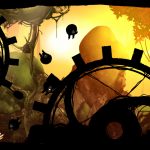
Badland
[Frogmind]
Categories: [Interactive & Monitor-Based] -

Big Huggin'
[Lindsay Grace]
Categories: [Interactive & Monitor-Based] -
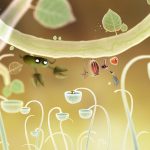
Botanicula
[Amanita Design]
Categories: [Interactive & Monitor-Based] -

Braid
[Jonathon Blow]
Categories: [Interactive & Monitor-Based] -

Cart Life
[Richard Hofmeier]
Categories: [Interactive & Monitor-Based] -
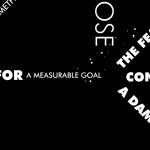
Eron-Logos
[Molleindustria]
Categories: [Interactive & Monitor-Based] -
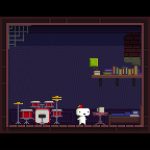
Fez
[Polytron]
Categories: [Interactive & Monitor-Based] -

flOw
[Sony Computer Entertainment America LLC] [thatgamecompany]
Categories: [Interactive & Monitor-Based] -

Flower
[Sony Computer Entertainment America LLC] [thatgamecompany]
Categories: [Interactive & Monitor-Based] -

Halcyon
[Kurt Bieg] [Zach Gage]
Categories: [Interactive & Monitor-Based] -

Invisible Threads
[Jeff Crouse] [Stephanie Rothenberg]
Categories: [Interactive & Monitor-Based] -

Journey
[Sony Computer Entertainment America LLC] [thatgamecompany]
Categories: [Interactive & Monitor-Based] -

Kentucky Route Zero
[Cardboard Computer]
Categories: [Interactive & Monitor-Based] -

Lilt Line
[Gordon Midwood]
Categories: [Interactive & Monitor-Based] -
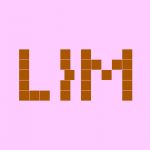
Lim
[Merritt Kopas]
Categories: [Interactive & Monitor-Based] -
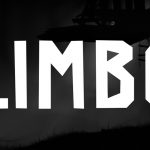
Limbo
[Playdead]
Categories: [Interactive & Monitor-Based] -

Luxuria Superbia
[Auriea Harvey] [Michaël Samyn]
Categories: [Interactive & Monitor-Based] -

Museum of the Microstar
[RUST LTD]
Categories: [Interactive & Monitor-Based] -
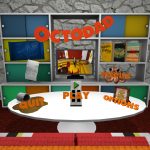
Octodad
[Young Horses]
Categories: [Interactive & Monitor-Based] -
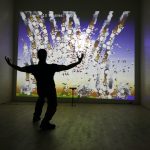
Operation Human Shield
[Shawn Larson]
Categories: [Interactive & Monitor-Based] -
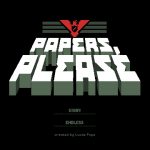
Papers Please
[3909 LLC]
Categories: [Interactive & Monitor-Based] -
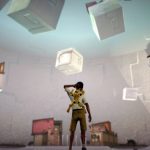
Papo & Yo
[Minority Media]
Categories: [Interactive & Monitor-Based] -

Participation May Vary
[Ben Chang] [Silvia Ruzanka]
Categories: [Interactive & Monitor-Based] -

Pivvot
[Whitaker Trebella]
Categories: [Interactive & Monitor-Based] -

Safety Instructions
[Pippen Barr]
Categories: [Interactive & Monitor-Based] -
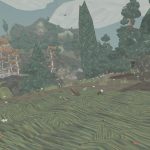
Shelter
[Might and Delight]
Categories: [Interactive & Monitor-Based] -

Spacebase DF9
[Double Fine Productions]
Categories: [Interactive & Monitor-Based] -
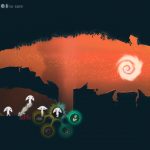
Spirits
[Spaces of Play]
Categories: [Interactive & Monitor-Based] -
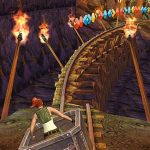
Temple Run 2
[Imangi Studios]
Categories: [Interactive & Monitor-Based] -

Tengami
[Ryo Agarie] [Jennifer Schneidereit]
Categories: [Interactive & Monitor-Based] -
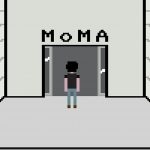
The Artist is Present
[Pippen Barr]
Categories: [Interactive & Monitor-Based] -
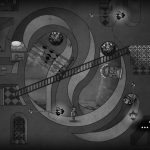
The Bridge
[Mario Castaneda] [Ty Taylor]
Categories: [Interactive & Monitor-Based] -
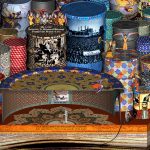
The Cat and the Coup
[Peter Brinson] [Kurosh ValaNejad]
Categories: [Augmented Reality/Virtual Reality] -

The Dream Machine
[Anders Gustafsson] [Erik Zaring]
Categories: [Interactive & Monitor-Based] -
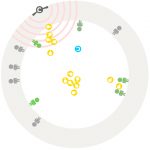
The Free Culture Game
[Molleindustria]
Categories: [Interactive & Monitor-Based] -

The Stanley Parable
[Galactic Cafe]
Categories: [Interactive & Monitor-Based] -
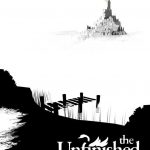
The Unfinished Swan
[Giant Sparrow] [Sony Computer Entertainment America LLC]
Categories: [Interactive & Monitor-Based] -
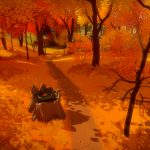
The Witness
[Jonathon Blow]
Categories: [Interactive & Monitor-Based] -

The Wolf Among Us
[Telltale Games]
Categories: [Interactive & Monitor-Based] -
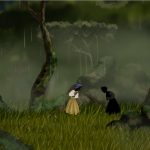
Thralled
[Thralled Team]
Categories: [Interactive & Monitor-Based] -

Unmanned
[Molleindustria]
Categories: [Interactive & Monitor-Based] -
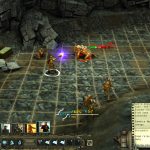
Wasteland 2
[inXile Entertainment]
Categories: [Interactive & Monitor-Based] -

Way
[Chris Bell] [Walt Destler]
Categories: [Interactive & Monitor-Based] -

Windosill
[Patrick Smith]
Categories: [Interactive & Monitor-Based] -

Year Walk
[Simon Flesser] [Magnus Gardebäck]
Categories: [Interactive & Monitor-Based]




